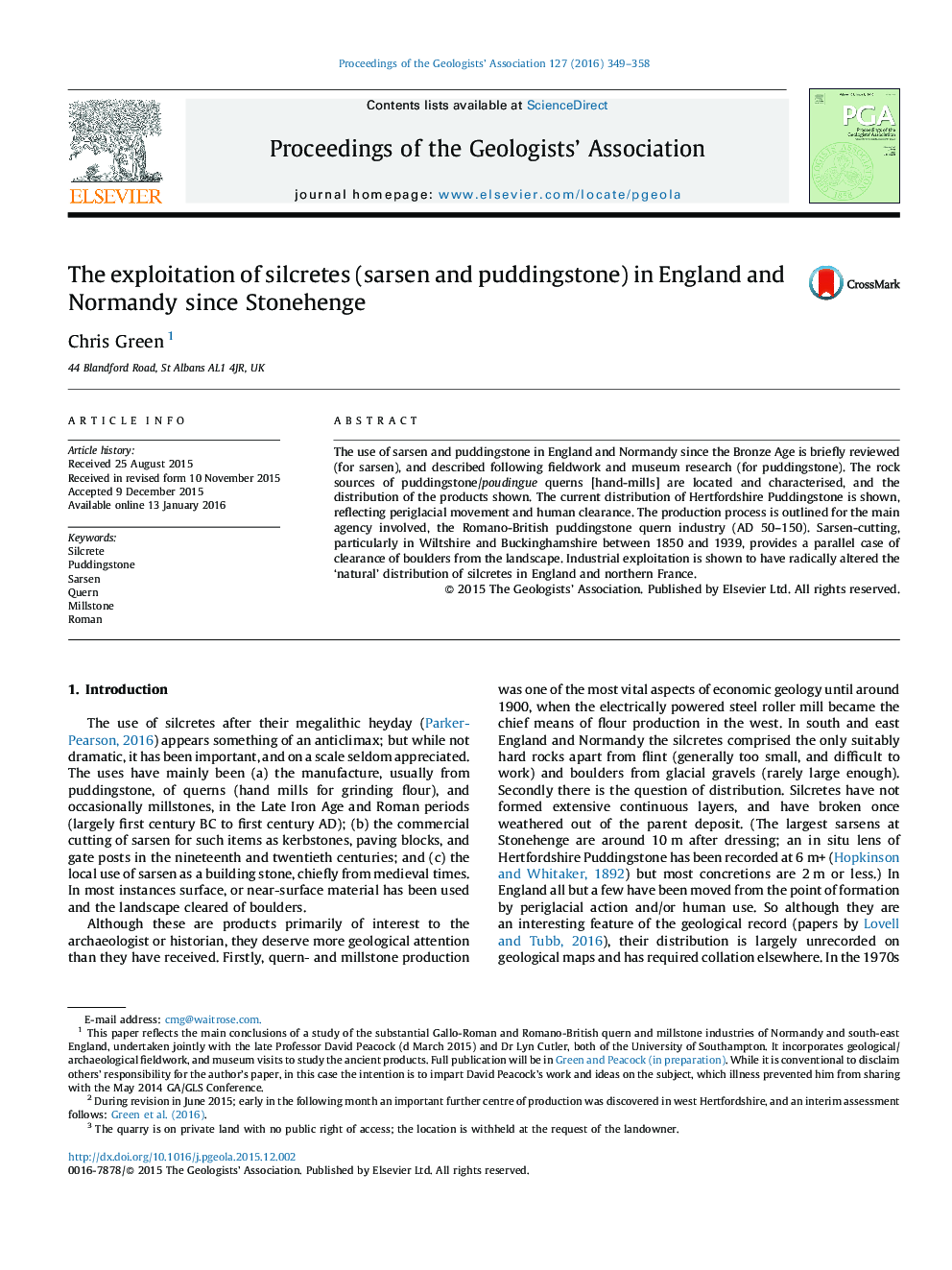| Article ID | Journal | Published Year | Pages | File Type |
|---|---|---|---|---|
| 4734582 | Proceedings of the Geologists' Association | 2016 | 10 Pages |
The use of sarsen and puddingstone in England and Normandy since the Bronze Age is briefly reviewed (for sarsen), and described following fieldwork and museum research (for puddingstone). The rock sources of puddingstone/poudingue querns [hand-mills] are located and characterised, and the distribution of the products shown. The current distribution of Hertfordshire Puddingstone is shown, reflecting periglacial movement and human clearance. The production process is outlined for the main agency involved, the Romano-British puddingstone quern industry (AD 50–150). Sarsen-cutting, particularly in Wiltshire and Buckinghamshire between 1850 and 1939, provides a parallel case of clearance of boulders from the landscape. Industrial exploitation is shown to have radically altered the ‘natural’ distribution of silcretes in England and northern France.
